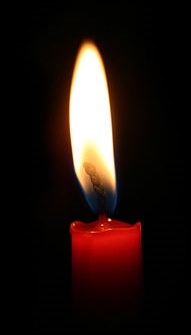Chemical chain reaction: Difference between revisions
J.williams (talk | contribs) m (1 revision imported) |
No edit summary |
||
| Line 1: | Line 1: | ||
[[Category:Done | [[Category:Done 2018-07-20]] | ||
[[File:320px-Tall_Flame2.jpg|400px|framed|right|Figure 1. A fire is an example of a chemical chain reaction.<ref>Wikimedia Commons. (June 8, 2015). ''Tall Flame'' [Online]. Available:http://commons.wikimedia.org/wiki/File:Tall_Flame.JPG#/media/File:Tall_Flame.JPG</ref> ]] | [[File:320px-Tall_Flame2.jpg|400px|framed|right|Figure 1. A fire is an example of a chemical chain reaction.<ref>Wikimedia Commons. (June 8, 2015). ''Tall Flame'' [Online]. Available:http://commons.wikimedia.org/wiki/File:Tall_Flame.JPG#/media/File:Tall_Flame.JPG</ref> ]] | ||
<onlyinclude>A '''chemical chain reaction''' is a series of [[chemical reaction]]s where the products of the reaction contribute to the [[reactant]]s of another reaction. This transformation of products to reactants allows a reaction to continue | <onlyinclude>A '''chemical chain reaction''' is a series of [[chemical reaction]]s where the products of the reaction contribute to the [[reactant]]s of another reaction. This transformation of products to reactants allows a reaction to continue with minimal or no outside influence.</onlyinclude><ref>A.Helmenstine. (May 27, 2015). ''Definition of Chain Reaction'' [Online]. Available: http://chemistry.about.com/od/chemistryglossary/g/Chain-Reaction-Definition.htm</ref> These chain reactions are generally triggered by a single initial reaction where an unstable product from the first reaction becomes the reactant. This process occurs until the system reaches some stable state.<ref name=uc>UC Davis Chem Wiki. (May 27, 2015). ''Chain Reactions'' [Online]. Available: http://chemwiki.ucdavis.edu/Physical_Chemistry/Kinetics/Complex_Reactions/Chain_Reactions</ref> This stable state often comes running out of [[fuel]] because the different [[chemical]]s are in their lowest energy state (like [[hydrocarbon]]s becoming [[water]] and [[carbon dioxide|CO<sub>2</sub>]]). | ||
There are three "phases" to a chemical chain reaction | There are three "phases" to a chemical chain reaction: first being the '''initiation''' or the initial spark, the next being the '''propagation''', and the final state being the '''termination''' where the system reaches a stable state.<ref name=uc/> | ||
A burning candle or other [[fire]] is an example of a chemical chain reaction. When a [[flammable]] material is surrounded by enough oxygen and is exposed to a source of heat or temperature above the flash point, a fire starts. If there is sufficient oxygen, fuel | A burning candle or other [[fire]] is an example of a chemical chain reaction. When a [[flammable]] material is surrounded by enough oxygen and is exposed to a source of heat or temperature above the [[flammable|flash point]], a fire starts. If there is sufficient oxygen, fuel and heat, it will continue to burn until there is no longer enough of one of these three components to maintain the chemical chain reaction of the fire. | ||
For more on chemical chain reactions see UC Davis' ChemWiki [http://chemwiki.ucdavis.edu/Physical_Chemistry/Kinetics/Complex_Reactions/Chain_Reactions here]. | For more on chemical chain reactions see UC Davis' ChemWiki [http://chemwiki.ucdavis.edu/Physical_Chemistry/Kinetics/Complex_Reactions/Chain_Reactions here]. | ||
==For Further Reading== | |||
*[[Chemical reaction]] | |||
*[[Hydrocarbon combustion]] | |||
*[[Flammable]] | |||
*[[Fuel]] | |||
*Or explore a [[Special:Random|random page]] | |||
==References== | ==References== | ||
{{reflist}} | {{reflist}} | ||
[[Category:Uploaded]] | [[Category:Uploaded]] | ||
Revision as of 20:40, 17 July 2018

A chemical chain reaction is a series of chemical reactions where the products of the reaction contribute to the reactants of another reaction. This transformation of products to reactants allows a reaction to continue with minimal or no outside influence.[2] These chain reactions are generally triggered by a single initial reaction where an unstable product from the first reaction becomes the reactant. This process occurs until the system reaches some stable state.[3] This stable state often comes running out of fuel because the different chemicals are in their lowest energy state (like hydrocarbons becoming water and CO2).
There are three "phases" to a chemical chain reaction: first being the initiation or the initial spark, the next being the propagation, and the final state being the termination where the system reaches a stable state.[3]
A burning candle or other fire is an example of a chemical chain reaction. When a flammable material is surrounded by enough oxygen and is exposed to a source of heat or temperature above the flash point, a fire starts. If there is sufficient oxygen, fuel and heat, it will continue to burn until there is no longer enough of one of these three components to maintain the chemical chain reaction of the fire.
For more on chemical chain reactions see UC Davis' ChemWiki here.
For Further Reading
- Chemical reaction
- Hydrocarbon combustion
- Flammable
- Fuel
- Or explore a random page
References
- ↑ Wikimedia Commons. (June 8, 2015). Tall Flame [Online]. Available:http://commons.wikimedia.org/wiki/File:Tall_Flame.JPG#/media/File:Tall_Flame.JPG
- ↑ A.Helmenstine. (May 27, 2015). Definition of Chain Reaction [Online]. Available: http://chemistry.about.com/od/chemistryglossary/g/Chain-Reaction-Definition.htm
- ↑ 3.0 3.1 UC Davis Chem Wiki. (May 27, 2015). Chain Reactions [Online]. Available: http://chemwiki.ucdavis.edu/Physical_Chemistry/Kinetics/Complex_Reactions/Chain_Reactions

